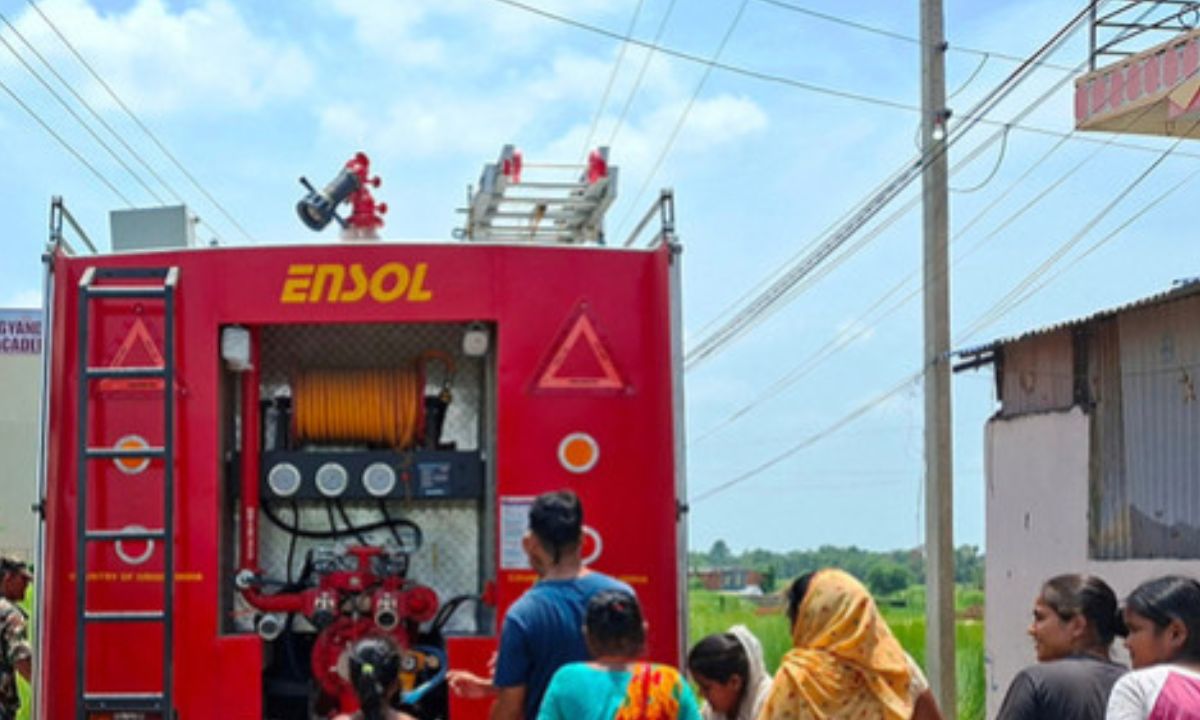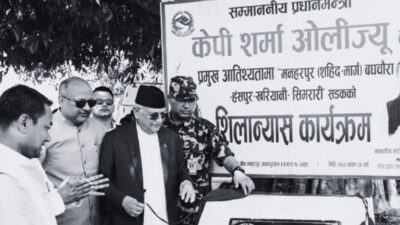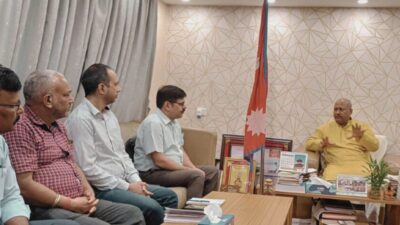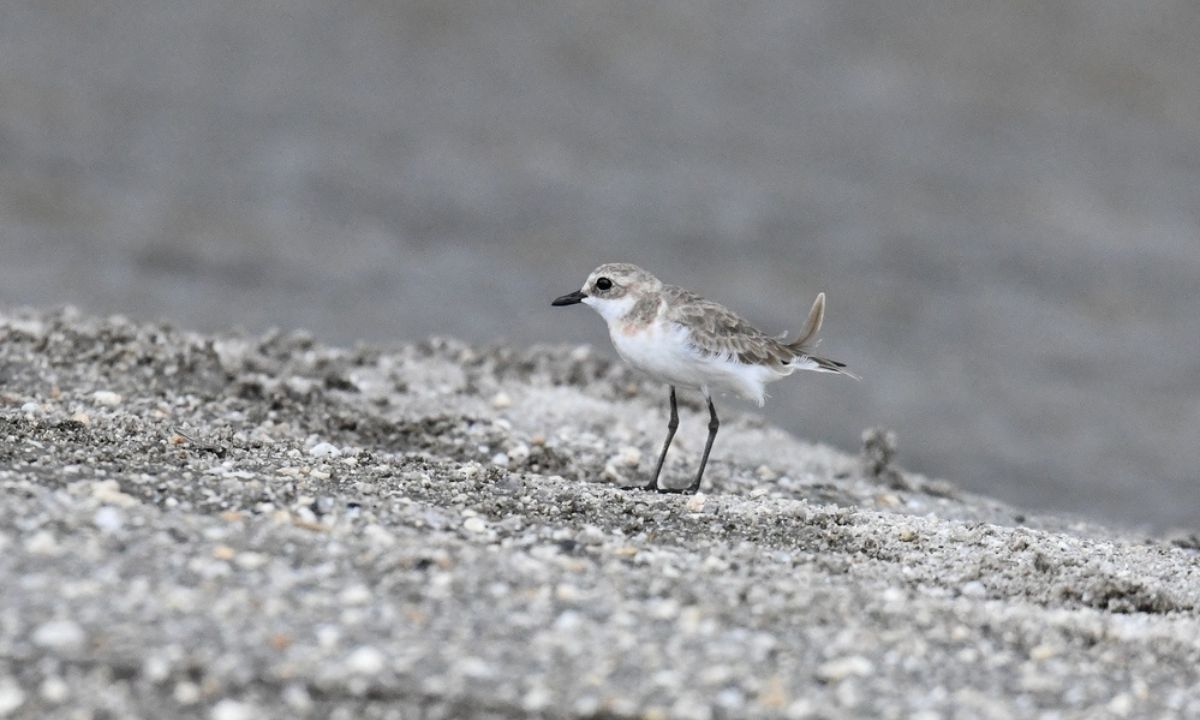Now Reading: Drought deepens in Madhesh: farmers struggle, drinking water scarce
- 01
Drought deepens in Madhesh: farmers struggle, drinking water scarce
Drought deepens in Madhesh: farmers struggle, drinking water scarce

Despite the monsoon season having started, there has been very little rainfall in the southern plains of Nepal. This has led to rivers, streams, and underground water sources drying up — causing a severe drinking water shortage and disrupting farming activities.
In many parts of the Madhesh region, traditional water sources like wells, handpumps (chapakals), and tubewells have stopped working. Without enough rain or irrigation, rice planting has been badly affected. In places where rice has already been planted, cracks have begun to appear in the fields due to lack of water.
Chapakals running dry
Amarendra Mahato, 68, from Janakpur-2, remembers a time when water easily came out of a chapakal dug just 60 feet deep. “In the 1980s, we had just one chapakal per neighborhood and that was enough,” he recalls. Over the years, the depth had to be increased from 60 to 120 feet, and now even a 450-foot-deep chapakal has run dry.
In Bharnaeni, Siraha, over 150 families used to rely on two municipal borewells. Since late Asar, both have started drying up. Locals now wait in long lines for hours just to collect a small amount of water. “We are now constantly worried about water, morning and evening,” said Devaki Mochi, a local resident.
The water table in the region has gone down sharply. According to local resident Suraj Mahara, water shortages have become a major issue, repeating every dry season. Local officials say overhead tanks have been built, but the pipeline network is still incomplete.
Experts like Chandrakishore blame the crisis on deforestation, river mining, poorly planned irrigation, and overuse of groundwater. “Simply drilling deeper or distributing water by tanker won’t solve this,” he said. “This is a deep-rooted issue that needs coordinated action from local, provincial, and federal governments.”
Government’s response
Madhesh Chief Minister Satish Kumar Singh said the drought and water crisis are the result of years of environmental destruction in the Chure hills and river areas. The provincial government has declared all districts in Madhesh as drought-affected and started distributing water by firetrucks and tankers.
Singh said the government is working on short- and long-term plans, including building water storage tanks and introducing rainwater harvesting systems during house construction approvals. “We are also preparing large projects with the federal government to help recharge groundwater,” he added.
Impact on farming
In areas like Birgunj-17, farmers like Brijeshwar Sah Kanu are struggling to save their rice. Cracks have formed in their fields after planting due to the lack of water. In southern Parsa, many farmers haven’t even been able to transplant rice seedlings, which are now drying in the fields.
According to Parsa’s Agriculture Knowledge Center, only 80% of rice planting has been completed in the district. Officials from the federal Ministry of Agriculture recently visited the area, and their report may influence upcoming relief measures.
Across Nepal, about 72% of rice planting has been completed, but in Madhesh — one of the country’s main food-producing regions — it is only around 46%.
Western Tarai also suffering
In the western Tarai districts of Lumbini Province — including Nawalparasi, Rupandehi, Kapilvastu, Dang, Banke, and Bardiya — similar drought conditions are affecting daily life. In Rupandehi’s Marchwari-6, people are now going around the village collecting water because handpumps have dried up.
One resident, Prahlad Chaudhary, said even digging 500 feet deep doesn’t guarantee water, which used to be found at just 100 feet ten years ago. In Bardiya’s Gulariya-8, a local technician said water used to come from 20 to 35 feet, but now chapakals must be dug much deeper.
In Bardiya, 92% of the planned 50,150 hectares of paddy land has been planted, but the remaining areas are still struggling due to the lack of rain. Office head Sagar Dhakal confirmed that the drought is directly affecting the planting process.
Shrinking forests, falling water levels
Conservationist Dr. Hem Sagar Baral recalls when a 100-foot pipe was enough to access water in Lumbini back in 2005. “Even the 500-foot chapakals have dried up now,” he said. The drop in underground water levels is mainly due to deforestation, over-construction, and environmental damage in the Chure region.
Baral said forest loss and unplanned urban expansion are causing less rainfall and higher temperatures. “Areas with fewer trees get less rain. As desertification increases, rainfall decreases,” he explained. He recommended planting trees near rivers like Tinau and Danav to restore forest cover.
Urgent need for water management
According to Ananath Baral, head of the Chure Tarai-Madhesh Conservation Program, excessive excavation and bulldozer use in the Chure area have disrupted natural water flow. This has led to both drying up and diversion of water sources.
To solve this, the government is now focusing on building ponds and water recharge systems in areas like Tulsipur, Ghorahi, Lamahi (Dang), Sainamaina (Rupandehi), Banganga (Kapilvastu), Sunwal (Nawalparasi), and Kalimati (Salyan).
In Kanchanpur, the water table has also dropped during the dry season. Previously, water was available at just 15–20 feet, but now chapakals need to be dug at 20–25 feet in many places. Tej Pahari, who has been drilling tubewells for 30 years, said water levels in the southern Chure belt are falling fast.
Bhimdatta Municipality’s Mahendranagar area has piped water in some wards, but even deep and shallow tubewells are drying up during the dry months. Water department chief Vivek Bisht said while there is no shortage during the rainy season, more study is needed to understand long-term changes in the water table.
Alarming statistics
- Rainfall deficit: As of the first week of Shrawan, Madhesh has received only 12% of the average rainfall. The weather department warns rainfall may remain below normal this year.
- Groundwater crisis: About 30% of handpumps and tubewells in Tarai are dry. In the past, water was found at 10 feet, but now it takes 50–100 feet or more.
- Agricultural threat: Only 46% of rice planting has been completed in Madhesh, far below the national average of 72%.
- Scientific study: A recent ICIMOD report found a 23.6% decline in snowfall in the Himalayan region, which affects water recharge in both mountain and plain areas.
- Government action: Madhesh has declared all its districts drought-affected. Still, lack of coordination with the federal government and weak long-term planning is slowing relief efforts.
The drought in Madhesh is not just a weather problem. It is a result of years of environmental mismanagement and requires urgent action at all levels of government.
















